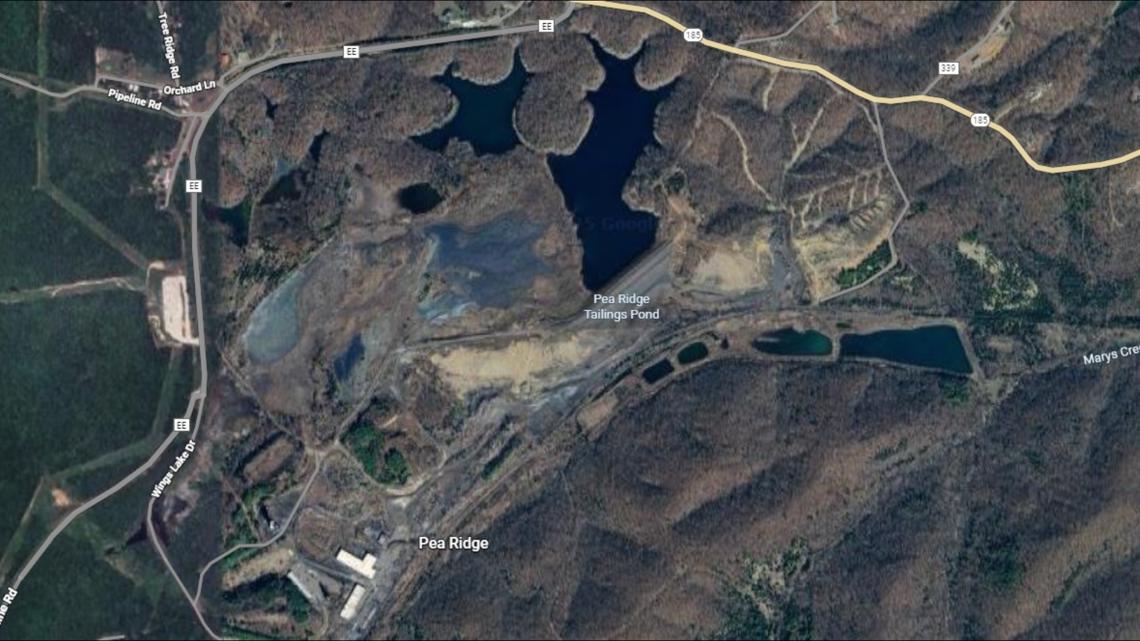The government will deploy low-flying airplanes to scan Missouri and Illinois for critical minerals as early as next week, a USGS representative told 5 On Your Side.
MISSOURI, USA — The government will soon deploy low-flying aircraft to sweep Missouri and other Midwest states over the next year, scanning the ground for the presence of critical minerals.
The U.S. Geological Survey announced Wednesday that the scans will map Missouri, Illinois, Iowa and Wisconsin as part of its Earth Mapping Resources Initiative to find minerals designated as “critical” to the nation’s economy and security by the Secretary of the Interior. The minerals are bedrock materials for modern technology, used in smartphones, renewable energy and artificial intelligence data centers.
Both Missouri and Illinois residents can expect to see the scanning aircraft as early as the week of Nov. 24, USGS Senior Public Affairs Specialist Seth Amgott told 5 On Your Side on Thursday. The Survey said aircraft won’t collect any photography or video data and will only be equipped with either elongated “stinger” or wing tip sensors to collect data. Click here for a full list of counties in both states expected to be scanned by the aircraft.
Missouri, in particular, is expected to contain some of the nation’s largest deposits of numerous critical minerals, with the state’s St. Francis Mountains being one of the few places in the country to have confirmed cobalt deposits, according to the Missouri Department of Natural Resources. Missouri has either mined or confirmed significant occurrences of at least 30 of the 60 listed critical minerals.
Missouri’s Old Lead Belt could be the new Critical Mineral Belt
The Survey previously used aerial mapping of Missouri’s “Old Lead Belt,” south of St. Louis, in 2023 and 2019. The region was the global leader in lead production in the late 19th and early 20th centuries.
That region has since also been identified as a hotbed for critical minerals, which was unknown to previous miners due to technological limitations, Missouri Department of Natural Resources Geologic Investigations Unit Chief Cheryl Seeger told 5 On Your Side.
Deposits of cobalt have already been identified in the mining waste of Pea Ridge Mine in Washington County, and other critical minerals may be identified elsewhere in that area.
“We’re kind of running all across the state collecting this data,” Seeger said. “We have two separate bedrock geologic mapping projects going on currently. We’ve been looking at black shales with eight other states to see what critical minerals may be in those. We’re starting a project in southwest Missouri with the Kansas and Oklahoma surveys in the old Tri-state zinc lead district.”
If enough critical minerals are found at high enough concentrations in Missouri, Seeger said, there is a possibility that mines like Pea Ridge could reopen throughout the state, but that’s dependent on national economics and the wishes of mine owners. Mines that have been closed for years or even decades would require a fair bit of rehabilitation. Even if production is focused only on extracting critical minerals from “tailings,” or mining waste, instead of drilling into the ground, Seeger said new production facilities would have to be built in order to separate the critical minerals out of the waste material.
“On the other hand, anything done at Pea Ridge would be on what’s considered ‘brown ground,’ an area that’s already mined, as opposed to going in and opening something new on green ground, so that also filters in to the economics,” Seeger said.
New mining brings new pollution, health risks
Pea Ridge is currently owned by Creve Coeur-based Caldera Holding LLC, which was fined $10,000 after it polluted a Meramec River tributary with levels of copper, iron, oil and grease that exceeded allowable limits for over a decade, according to 2024 reporting from the St. Louis Post-Dispatch.
The company was reportedly attempting to harvest critical minerals at Pea Ridge at the time of the pollution. It has since signed a voluntary abatement order with the Missouri Department of Natural Resources, saying that if it no longer mines or processes activity on the site, it wouldn’t have to pay the fine.
The subtle rebirth of Pea Ridge acts as a precautionary tale as other mines begin to open amid the push for critical mineral mining. John Madras, a former Department of Natural Resources policy director who worked on pollution issues, told 5 On Your Side that pollution has been an issue for as long as there’s been mining.
“As much as the milling process is fairly efficient, it’s not perfect,” Madras said. “You’re going to end up with these landscapes that you can see from satellite images of tailings ponds that will be there pretty much forever, and they’ll be leaching very low levels of the metals left in those tailings. Those tailings are held behind dams, and there’s always a challenge to make sure those dams are designed properly so they can remain in place and they don’t collapse.”
Big River Mine’s tailings in St. Francois County, for example, have been there for over 100 years and are currently caving into the Big River and blowing harmful waste around to nearby communities like Park Hills, Madras said. A silica sand mine in Ste. Genevieve County was denied its permit in 2023 after the community pushed back, since silica is a major carcinogen.
Doing a mining operation right takes long-term forethought, management and expense both during the operation and a long time after it finishes, according to Madras. But so far, examples of a “good” mine are few and far between.
“The mining problems just permeate everything we do,” Madras said. “Someone could create the perfect mine, and that would be wonderful, but we haven’t seen that yet.”

